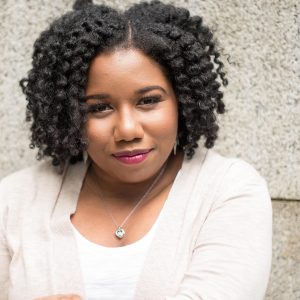This Month, NLA’s Tallahj Curry had the pleasure of interviewing Joanna MacKenzie’s client Sarah Zachrich Jeng, author of upcoming novel The Other Me.
In The Other Me, Kelly is trying to make sense of a life that feels unfamiliar. She finds answers that lead to more questions. What is your process of mapping out a mystery that grows throughout the novel?
I spent some time brainstorming ideas for how Kelly could investigate—what if she interviews a certain character? What if she finds some sort of document?—and tried to figure out what she might discover using each method, what bearing that new information would have on her “case,” and where else it might lead. Since I did a lot of this in revisions, I knew most of what she would ultimately need to find out. It was just a matter of getting her there in a way that didn’t feel like too much of a leap.
Do you write the novel ending first, last, or somewhere in between? How does this help you build suspense?
I usually don’t have the ending written or even outlined too exactly when I start. Though I like to have some idea of where I’m going, the last couple of things I’ve written have ended up in very different places than I thought they would. With The Other Me, I wrote two or three different endings, because the middle of the book had changed in ways that demanded the ending change as well. Generally revisions are where the real attention to pacing and tension gets paid.
Kelly goes through a massive, unexpected jump that tests her own memory. The life she is told she lived does not match the life she thought she lived. What is your method for making two versions of the same character?
Spreadsheets. Really. I had a tab for her Chicago life and a tab for her Michigan life, with dates and key events from birth until the novel’s present. I also made lists of things that might have changed, such as her appearance, and the ripple effects of those differences, like how her brother Nick now has a son and a decent job, because since Kelly didn’t go to an out-of-state school he had no excuse to keep living at home to look after their parents.
Not everything was super precise. Our memories play tricks on us all the time, and I figured in a parallel universe kind of situation, some things would just be different because a butterfly flapped its wings a thousand years ago. But I tried to include enough plausible anomalies to keep Kelly off balance.
What was your process for writing a different take on a familiar trope? How did you follow the rules of the fictional world as you wrote the story?
I’m going to try really hard to answer this without spoilers. The short answer is “more lists.” (Can you tell I’m a list maker?) I had a list of the way events proceeded linearly, as well as according to each key character’s perception. I had a list of the principles that a certain important piece of technology in the book operates under, and theories that either correspond with or contradict what happens in the novel. I wasn’t too concerned with accurate science (for reasons that will be obvious once you’ve read the book), but I was concerned with consistency.
I also wanted to make sure that by the end, I’d made it clear(ish) to readers why Kelly’s life changes all at once, at the exact moment it does. So I spent a lot of time thinking through the implications of what happens to cause that, and writing and rewriting. I drew this really ugly diagram of [redacted thing that happens] so I could have a graphical representation to refer back to when I forgot what a certain character was supposed to know about at a certain part of the story.
How much did you draw from your own life when creating the characters for The Other Me? Do you believe advice to write what you know is helpful or restrictive?
I played in rock bands in my twenties, but once I got a “real” job and had a child, that lifestyle wasn’t practical anymore. However, I found myself missing both the creativity and the feeling that something exciting could happen at any time. (When you live in the suburbs and go to bed at 10pm, not much happens that’s unexpected, except maybe getting puked on.) So writing The Other Me was both a creative outlet and a way for me to work out my feelings about the ways in which my life had changed.
“Write what you know” can be helpful when you’re feeling your way into a new project or trying to evoke emotions. My writing is always more resonant if I’m trying to capture a feeling or an experience that I myself have had, even if I’m coming at it from a different direction. That said, like any writing guideline it’s not absolute. If you decide you want your main character to have a job you don’t know anything about, that’s what research is for. “Know what you write” might be more apt advice in those situations.
I do think writing is enriched by personal knowledge. As I’ve learned more about the zero-sum nature of publishing, I’ve come to believe that white, privileged writers (who are still the majority of published authors) shouldn’t appropriate the stories of marginalized people, when those stories could be better portrayed by authors from those groups.
What is the greatest lesson one of your characters has taught you?
That one thing you think you want is probably not the thing that’s going to make you happy.
What is one of your favorite lines from The Other Me?
Kelly: “Everyone has regrets. If you don’t you’re either an a**hole or you’re lying to yourself.”
The Other Me by Sarah Zachrich Jeng releases August 10, 2021. Preorder the book here!






